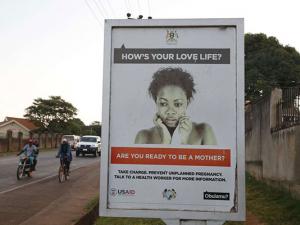
Drive to provide 120 million additional women with protection now looks to 2030
A global partnership that has for the past six years been working to reduce population growth in some of the world’s poorest countries has released a report that shows it will miss by more than half, its 2020 target of providing 120 million additional women with modern contraceptives.
The partnership named Family Planning 2020 (FP2020), which was created over six year ago to target the 69 poorest countries then, has seen the number of women there using contraceptives increase from 271 million to 317 million.
This means that FP2020 has met 38 per cent of its target so far.
Beth Schlacter, the executive director of FP2020, blamed the exclusion of marginalised groups including young people and displaced persons for failure to meet targets.
She added that some countries like Uganda could have been overambitious, basing their goals on the growth trajectory of India, which has been investing in family planning services for a rather longer period.
In 2012, Uganda pledged to invest $5 million in provision of family planning services. The target, however, has never been met, even though the Ministry of Health renewed this pledge in 2017.
Other countries in the region like Ethiopia and Kenya allocate a lot more funding to family planning services.
The FP2020 report shows that Kenya grew its domestic funding of family planning from $6.6 million to $19 million.
The investment in family planning is paying off for Kenya. Information from the population reference bureau shows that the average number of children per Kenyan woman is now 3.9, below the sub Saharan Africa number of 4.9.
Rwanda has also met its commitment, recording an average fertility rate of 4.4 children per woman.
Uganda and Tanzania which have over the past two years, introduced policies considered retrogressive, recorded average fertility rates of 5.4 and 5.2 children per woman respectively.
In 2017, Uganda passed a policy requiring girls below 18, to bring along guardians before they can have access to family planning services.
In addition to ordering the expulsion and arrest of schoolgirls who get pregnant, Tanzania’s President John Magufuli encourages women not to use contraceptives, suggesting it is a sign of laziness.
These policies have translated into higher numbers of unintended pregnancies.
In East Africa, the FP2020 report shows that Uganda has the highest number of unintended pregnancies at 1.3 million.
It is followed by Tanzania with 1.1 million; this is despite the fact that these two countries do not have the highest population in the region.
Unintended pregnancies are a result of women not taking advantage of family planning services.
According to the FP2020 report, there are 214 million women in the 69 target countries that would like to prevent or delay pregnancy but are not using any contraceptive method.
Included in the 169 targets of the UN’ Sustainable Development Goals is one on ensuring provision of family planning, information and education, as these are necessary components of achieving universal access to sexual and reproductive health care services.
In addition to this particular target experts say that providing family planning services will play a significant role in delivering other SDG targets, be it on eradicating poverty in all on its forms, reducing maternal mortality or slowing global warming.
